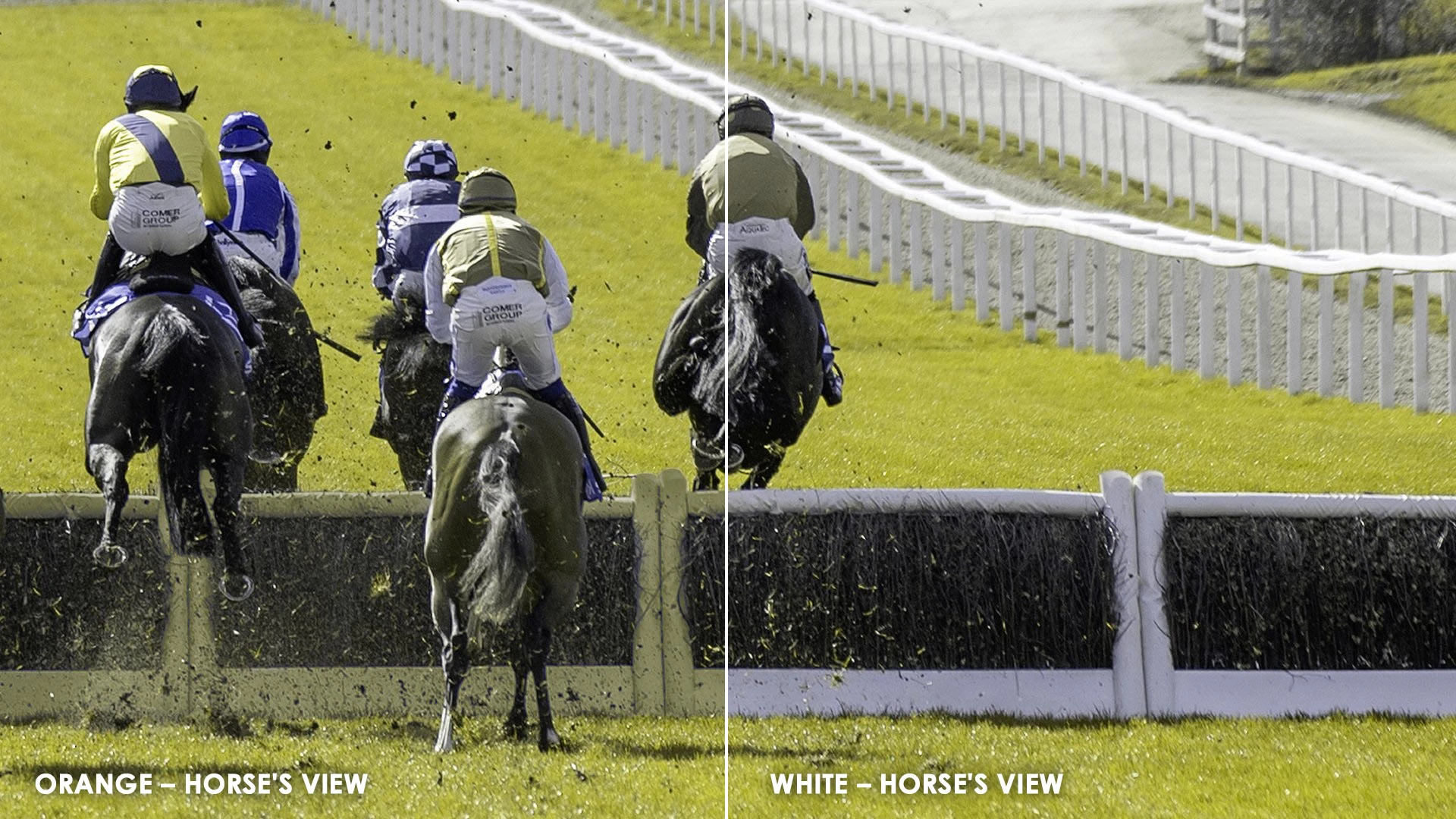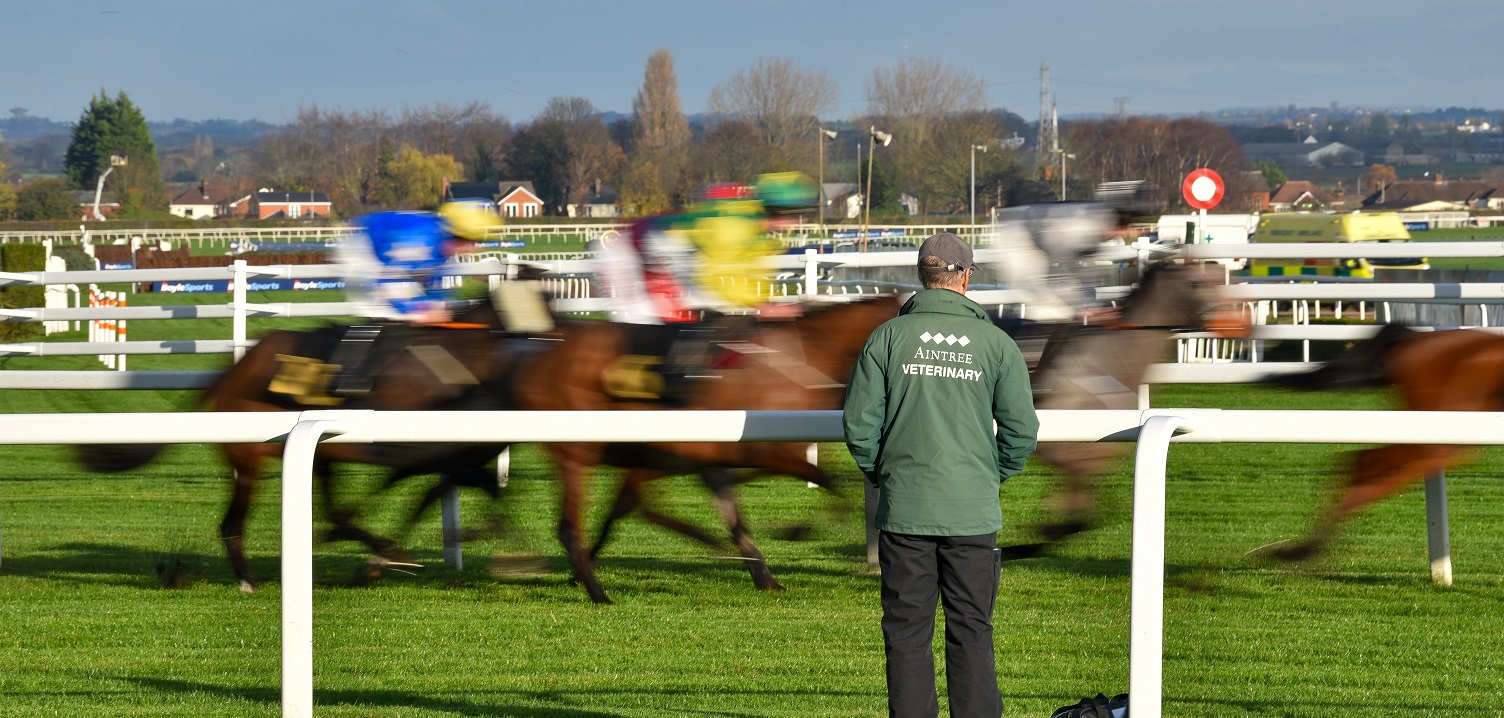BRITISH RACING MAKES OBSTACLES MORE VISIBLE TO HORSES
A landmark equine vision study commissioned by British Racing has used cutting-edge science to look through the eyes of a horse as part of its efforts to reduce risk and improve safety on racecourses.

British racing marked a new era over jumps in 2022 when markers on all hurdles and jumps on racecourses turned from orange to white. The change is one part of a host of safety projects aimed at reducing risk in horseracing.
Cutting-edge research carried out by Exeter University, and funded by British racing, proved that changing the colour of obstacle markers such as take-off boards and guard rails from orange to white, would provide increased contrast and clarity for horses. By improving clarity, horses are being helped to sight obstacles on a racecourse more effectively and thereby are better supported to do the job they are being asked to do.
It’s all about biology. Horses have dichromatic vision vs a human’s trichromatic vision. This means horses see in contrast and shades of blue and yellow, but don’t see shades of red and orange in the same way humans do. Horses actually see orange and red in shades of green. A horse’s vision can be likened to that of a person who is colourblind.
Prior to 2022, all obstacle markers had been in a traditional bright orange colour which was thought to provide effective visibility for both horse and rider. Through the research project it was shown that although horses do jump the traditional coloured fences well enough, their performance was improved when the markers were changed to white, blue, or yellow.
During Exeter University’s testing period, 131 obstacles were closely analysed across 11 racecourses across the study, followed by a behavioural study on 14 horses at Richard Phillip’s training yard in Adlestrop, Gloucestershire. White and fluorescent yellow stood out as the strongest performing colours in terms of visibility and jumping performance for horses. But as fluorescent yellow faded rapidly in tests, Exeter University ratified the racing industry’s decision to choose white as the way forward. Phased over 10 months during 2022, the transformation saw an estimated 2,500 obstacle markers changed across all 40 jump courses in Britain.

The ’orange to white’ project is part of British racing’s continuous efforts to improve safety, reduce avoidable risk, and ultimately reduce fallers in the sport. The better use of data and analytics is providing great opportunities to identify and combat unnecessary risk, from cutting-edge camera equipment that establishes the colour perception of horses, to the development of the sport’s Jump Racing Risk Model in partnership with the Royal Veterinary College.
The faller rate in British racing has reduced by one third over the last 20 years, and initial findings suggest the orange to white project is helping to drive this number down further. Decisions backed by science, in the interest of the athletes that power a sport, can only be a good thing.